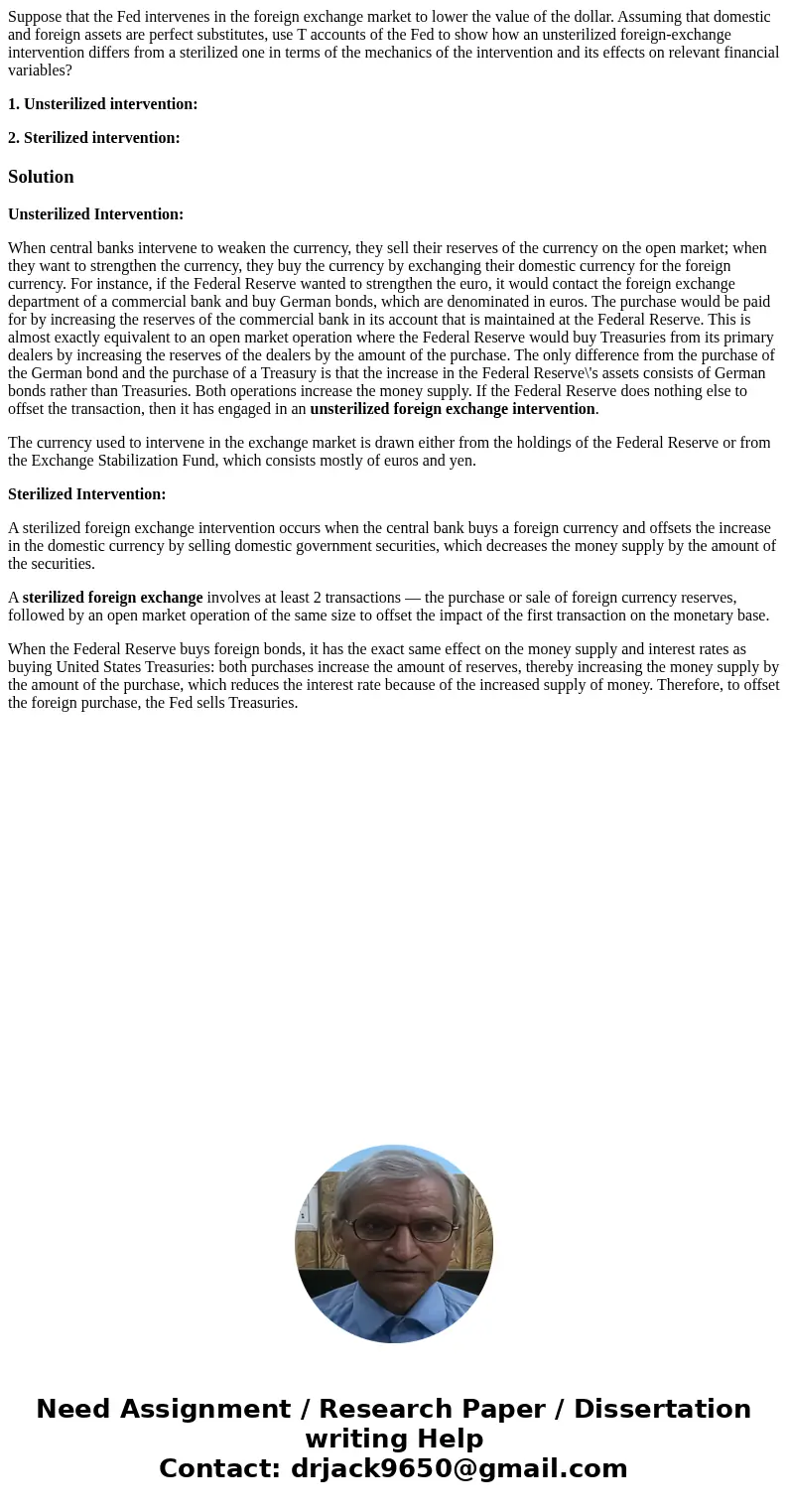Suppose that the Fed intervenes in the foreign exchange mark
Suppose that the Fed intervenes in the foreign exchange market to lower the value of the dollar. Assuming that domestic and foreign assets are perfect substitutes, use T accounts of the Fed to show how an unsterilized foreign-exchange intervention differs from a sterilized one in terms of the mechanics of the intervention and its effects on relevant financial variables?
1. Unsterilized intervention:
2. Sterilized intervention:
Solution
Unsterilized Intervention:
When central banks intervene to weaken the currency, they sell their reserves of the currency on the open market; when they want to strengthen the currency, they buy the currency by exchanging their domestic currency for the foreign currency. For instance, if the Federal Reserve wanted to strengthen the euro, it would contact the foreign exchange department of a commercial bank and buy German bonds, which are denominated in euros. The purchase would be paid for by increasing the reserves of the commercial bank in its account that is maintained at the Federal Reserve. This is almost exactly equivalent to an open market operation where the Federal Reserve would buy Treasuries from its primary dealers by increasing the reserves of the dealers by the amount of the purchase. The only difference from the purchase of the German bond and the purchase of a Treasury is that the increase in the Federal Reserve\'s assets consists of German bonds rather than Treasuries. Both operations increase the money supply. If the Federal Reserve does nothing else to offset the transaction, then it has engaged in an unsterilized foreign exchange intervention.
The currency used to intervene in the exchange market is drawn either from the holdings of the Federal Reserve or from the Exchange Stabilization Fund, which consists mostly of euros and yen.
Sterilized Intervention:
A sterilized foreign exchange intervention occurs when the central bank buys a foreign currency and offsets the increase in the domestic currency by selling domestic government securities, which decreases the money supply by the amount of the securities.
A sterilized foreign exchange involves at least 2 transactions — the purchase or sale of foreign currency reserves, followed by an open market operation of the same size to offset the impact of the first transaction on the monetary base.
When the Federal Reserve buys foreign bonds, it has the exact same effect on the money supply and interest rates as buying United States Treasuries: both purchases increase the amount of reserves, thereby increasing the money supply by the amount of the purchase, which reduces the interest rate because of the increased supply of money. Therefore, to offset the foreign purchase, the Fed sells Treasuries.

 Homework Sourse
Homework Sourse